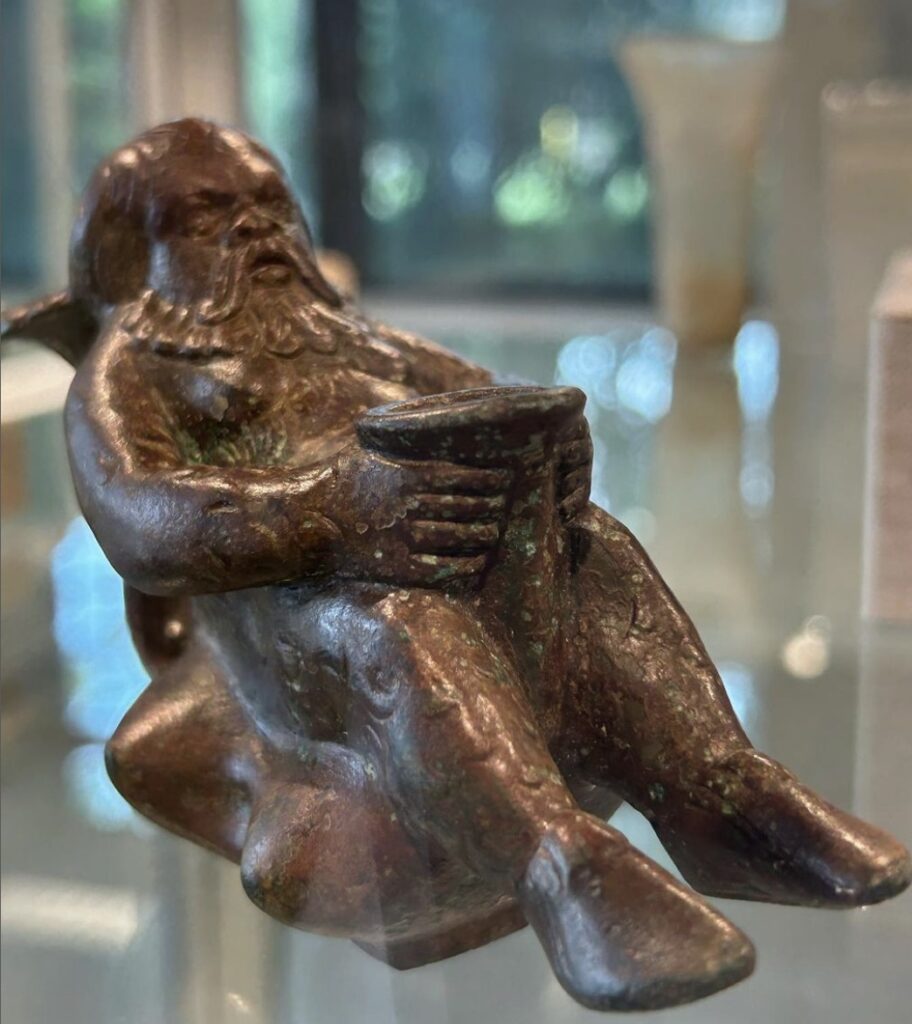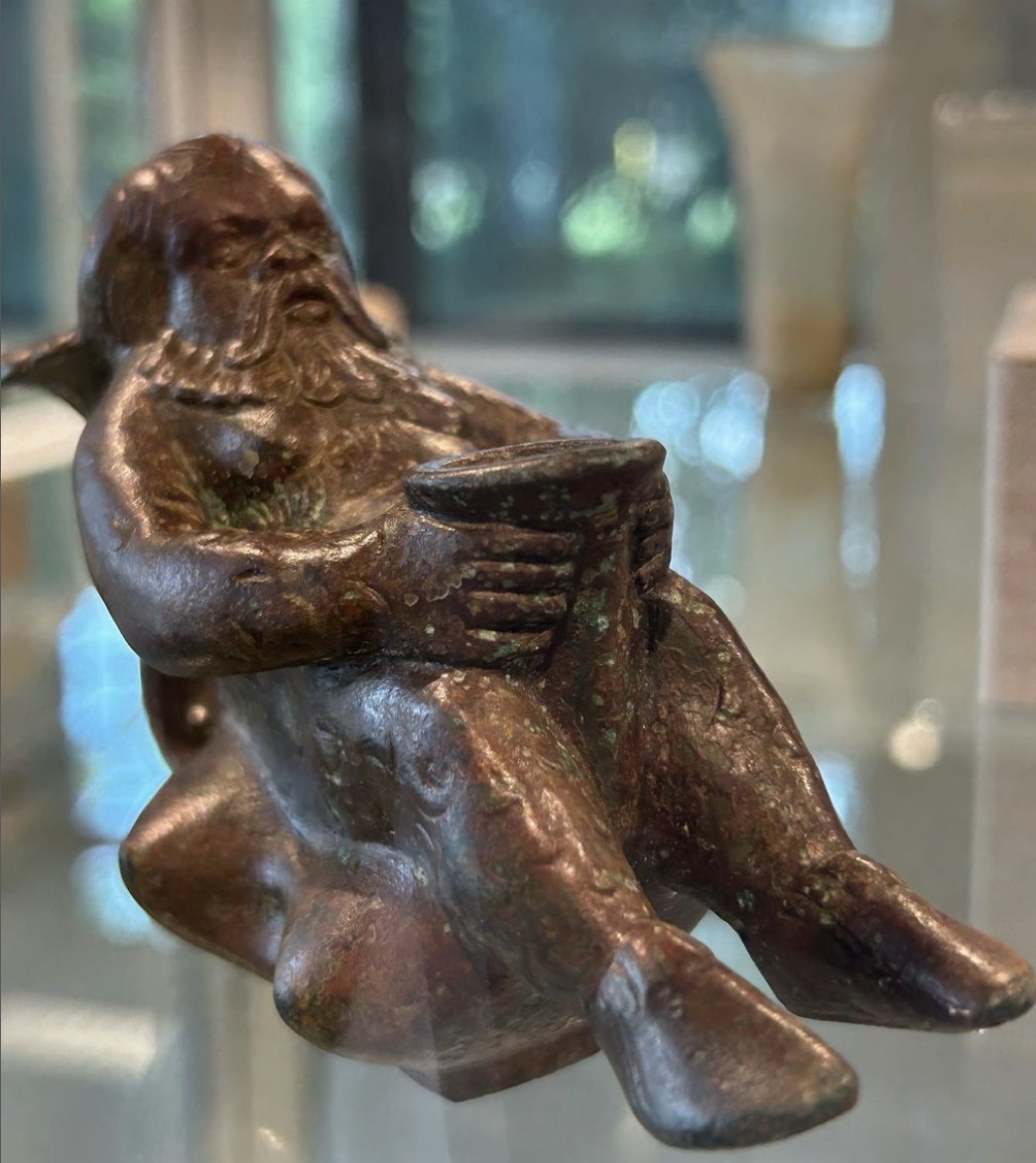Reclining slack on a wine skin, his feet dangling off the edge, this little fellow is up to silly, satyr-things. The object is an askos, a flask of sorts (for lack of a better modern term) that might not necessarily have caught my eye, except that it was part of the clever and clean reinstallation at Fordham University.
One would be forgiven for not knowing this collection antiquities (the majority a bequest made by an alumnus in the early 2000’s) but nestled jewel-like in the Bronx, it is everything a teaching collection ought to be. The reinstall is brightly lit and airy, and when I visited yesterday was full of several dozen boisterous 12 year olds in summer school T-shirts peering (giggling) into vitrines and being wrangled by their teachers. I loved it. During the academic year, the viewership is older and more studious.


The little museum has been in the news in recent years, as 99 objects were seized and repatriated to Italy as they had evidently once been traded through a less than savory dealer. The curator has not brushed this under the rug, but rather in a floor to ceiling introductory wall text has addressed it head on (with admirable lack of ire) – presumably for the edification and education of visiting students.
I don’t know the pieces that had been returned, but presumably most were South Italian vases and little statuettes. It does make one wonder: what is the best course of action is going forward? Will those 99 objects be displayed back in Italy, or will the molder in a storeroom? If the current climate (particularly in the US) weren’t so hysterical regarding antiquities, might the Italians have been persuaded to let them remain on a long term loan?
I would have hated to miss that slovenly satyr…




